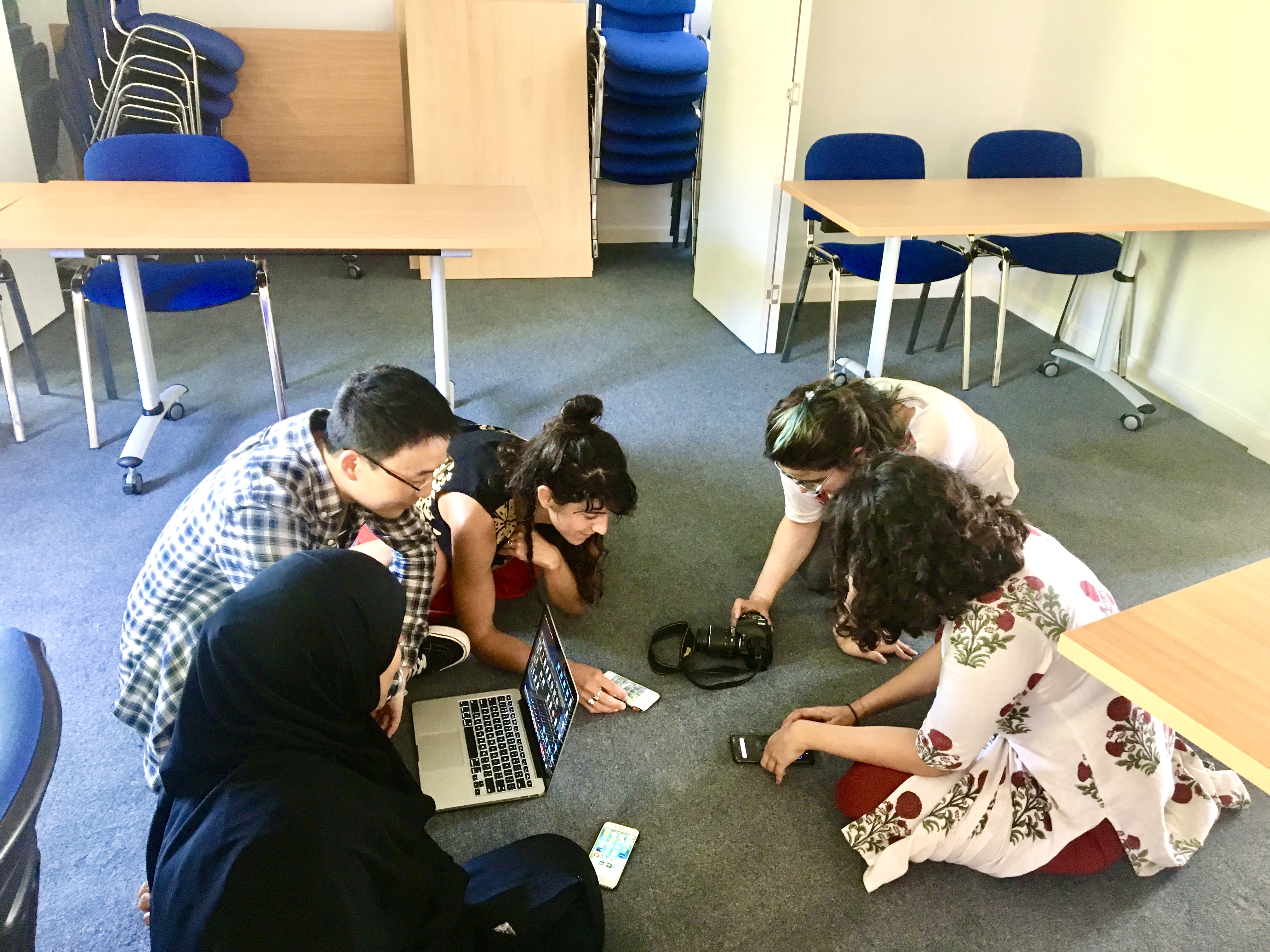Introducing the Photovoice Method
In its simplest sense, photovoice is about giving people cameras to take photographs around a theme. The participants then explain why they took these photos and why they are important to them and their community. The method works well when the facilitators – a researcher, NGO worker, or visual methods practitioner – have previously worked with the community or have a trusted interlocutor with rapport with the local community.
The technique usually centres on group-based activity, allowing a collective voice to emerge from the images. Hence, the VOICE in ‘photovoice’ is also an acronym – Voice Of Individual and Collective Empowerment. After everyone has taken their photographs, the group sit together, discuss the photos, and develop the accompanying narratives. They select the pictures that best summarise the story they want to tell and refine the narrative descriptions. They then present the images and narratives to an audience, possibly other community members, researchers, or policymakers. These people can then act as messengers, sharing the photovoice stories with a broader audience at different levels.

Orienting the researchers
The photovoice method is about letting go of outsiders’ control and looking at issues from the community’s perspective. This may be challenging for researchers, NGO workers, and others who like to be in charge of how stories are told!
Photovoice rests on three pillars. First, it is aimed at helping those who are often silenced to gain a voice. Second, it relies on photographs and narratives developed by the community. And third, it assists in developing a critical consciousness around an issue, both on the part of the facilitator and the participants, as they generate co-produced knowledge. As we found, embedding the methodology within the research process is crucial.
At the start of the PASTRES project, we held a workshop with all researchers to help orient the visual methods work. This involved exploring how to find out different meanings of pictures, particularly around a complex theme such as ‘uncertainty’; understanding the basics of visual ethnography for meaning-making; discussing how different images and narratives can be looked at through an ‘intersectional’ lens, exploring how social difference influences image creation and interpretation; examining how a common theme can emerge out of the images and narratives, facilitating this without constraining the discussion around preset ideas (such as academic definitions of ‘uncertainty), and finally, how the collective nature of the co-production process can be a powerful tool for broader advocacy and policy engagement.
As researchers, the PASTRES team had quite a few questions. What are the ethical issues of using photography within a community where one has spent considerable time? Is it extractive and inappropriate? The discussion focused on how photovoice is about looking through the lens of the community, exploring the world they live in, their perceptions, anxieties and uncertainties, and allowing their reflections about the evolving daily realities around them to come to life.
Photovoice complements other research or development activities and equally must rely on trust and confidence in the researcher (or another facilitator) to work effectively. It may not be appropriate for some people and in some settings; in others, it can be liberating and informative for all involved. In all cases, ethical protocols must be followed, requiring prior informed consent for all activities and a restriction on photography involving minors and anyone who cannot consent. In the PASTRES case, the ethics approval of the university and following the guidelines agreed by the funder were essential.